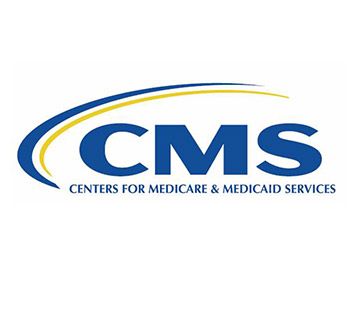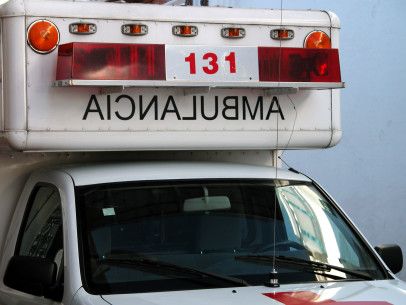Based on implementation issues involving the Prior Authorization program for repetitive patients inSouth Carolina, Brian and I had a conference call with representatives of CMS and Palmetto on Friday January 9, 2015. Three main issues were discussed, as follows:
1. Legal Representative Payee – There was confusion concerning repetitive patients that had a Legal Representative Payee. These are patients who can not conduct their own affairs and have a form on file at the Social Security Administration for someone else to be their legal representative. When ambulance companies submitted for Prior Authorization for these patients, they were told thePrior Authorization did not apply for the patient. Palmetto posted their policy for these patients on their web site.
Unfortunately, you will not know right away which patients have a legal representative payee. Most likely you will not know until you receive a rejection of the Prior Authorization request. Therefore, until you have been told a repetitive patient has a legal representative payee, file with Palmetto for the priorauthorization.
Once you are told the patient has a legal representative payee, then submit claims, just as you would for non-repetitive patients, i.e. do not continue to try to obtain prior approval or a Unique Transaction Number (UTN).
We have asked Palmetto if there is a database that you can access before going through the priorauthorization process. So far, there is not, but they are checking on this issue.
FYI, this was a policy instituted by CMS for the Prior Authorization process based on other programs (not ambulance) they have in place.
2. Incorrect Edit for Non-Repetitive Patients – On Wednesday, January 7th, we advised Palmetto that claims for non-repetitive patients were either being denied or that they needed further development as there is a systems edit that is pulling patients who had multiple transports over a period of time, but are not supposed to be in this Prior Authorization program. For example, a patient who has had four hospital discharges following illnesses for a fracture, a CVA, pneumonia and surgery, is not “repetitive”, for Prior Authorization purposes. On the conference call on Friday, Palmetto and CMS agreed with our assessment of the situation. They indicated that not only has the cause of the problem been identified, but they believe that it will be fixed in approximately one week. They are testing it now. They are looking at January 19 as the date for the “fix” to be implemented.
They have located 485 claims in this status that are currently “suspended”. When the “fix” is implemented, they will release these claims for processing, i.e. those providers should not resubmit the claims as Palmetto will do it automatically. Claims for these non-repetitive patients that have already been rejected should be resubmitted.
NOTE: Novitas is having the same problem. They sent out a notice to providers in their jurisdiction advising them they are aware of the problem. We assume that the same “fix” will be tried by Novitas.
3. Common Errors – We asked Palmetto if they could come up with a list of the common errors being made by ambulance companies. Following the conference call, they provided us with the list below. Providers in South Carolina (as well as in New Jersey and Pennsylvania, even though NJ and PA submit to Novitas) should review the list to ensure you are not making these mistakes:
– The PCS submitted does not have a valid signature date.
– The date of the signature is post- dated, perhaps to match a future date the patient will be starting.
– The signature on the PCS is not identifiable. The name of the physician must be identifiable. This does not mean the signature itself must be legible, it means that Palmetto has to be able to read the name of the physician that signed the PCS.
– The PCS has been amended (e.g. to print or type the name of the physician) without any notation by the amending individual. Any amendments/additional information should be clearly signed or initialed and dated by the person making the change or note.
– Submission of contradictory documentation. For instance, the PCS may support the transport, but the supporting documentation from the certifying physician does not.
– If the Prior Authorization is approved, the UTN is not entered into the appropriate field or submitted at all.
– For claims that are non-emergent, non-repetitive, providers are listing something (e.g. “N/A” or “not a PA” or “non-repetitive”) in the UTN field. For these non-repetitive patients, do not put anything the UTN field. The edit for the prior authorization is hard coded. Therefore, if their computer finds anything in this field, for patients who do not have prior authorization, the claim will reject.
Palmetto indicated that they will have a conference call with ambulance providers to discuss “hot issues”, including those above. At this time, they are looking to have that conference call on January 19th, although that is subject to change. For those affected, check the Palmetto web site and otherwise look for the notice for this conference call.
Finally, implementing a program of this nature is always going to have some start-up problems. Now that the two issues noted in #1 and #2 above have been identified and are about to be resolved, the remaining problems, such as those noted in #3 above, are mostly left up to the providers to understand what is needed, where the information is to be listed, etc. Once that is understood, the process will work smoothly as it did for many years in Ohio, when Palmetto and its predecessor used a prior authorization process for ambulance transports of non-emergency dialysis patients.
Of course, there will always be those situations where you believe medical necessity is met, but Palmetto does not agree. In those situations you will have to decide if more information is needed, whether you agree with Palmetto and the patient can be transported via wheelchair van, whether you need to advise the patient/facility accordingly, whether to accept the denial or whether to appeal.












